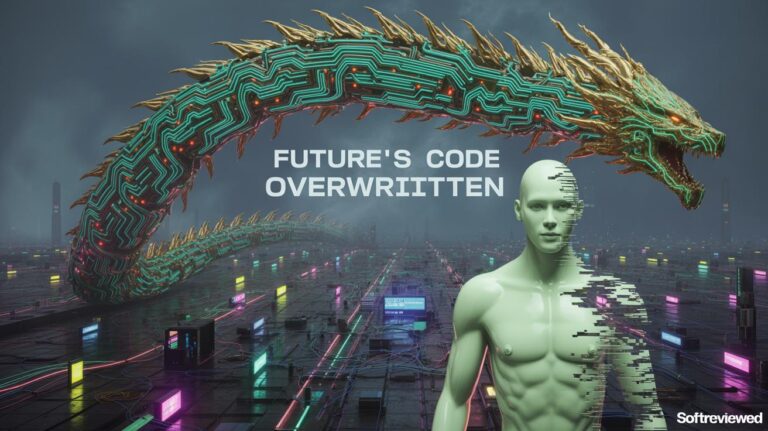Kimi-K2: The Trillion-Parameter AI Powerhouse
Exploring the capabilities and specifications of one of the most advanced open-source AI models
1 Trillion Parameters, Operational Excellence
Kimi-K2 is a mega-scale Mixture of Experts (MoE) model with a staggering 1 trillion total parameters, activating 32 billion during each inference. This architecture makes it a true heavyweight in the open-source AI development landscape, delivering exceptional performance while maintaining computational efficiency.
Benchmark Leadership
Demonstrates state-of-the-art performance across critical domains: coding (EvalPlus: 80.3), mathematics (MATH: 70.2), and language reasoning (MMLU: 87.8). These impressive metrics position Kimi-K2 ahead of competitors like Deepseek-V3 and Llama 4 Maverick, establishing it as a frontrunner in AI capabilities.
Agentic Capability
Unlike traditional LLMs focused solely on responding to prompts, Kimi-K2 is engineered for autonomy and action. It excels at complex tasks beyond simple answering, with specialized optimization for coding workflows, problem-solving scenarios, and multi-step reasoning challenges—making it an ideal foundation for AI agents.
Dual Deployment Options
Choose between two specialized variants: Kimi-K2-Base for research and fine-tuning applications, or Kimi-K2-Instruct for pre-tuned chat and agent tasks. Access the model via API ($0.15–$2.50/million tokens) or deploy locally with optimization frameworks like vLLM or TensorRT for maximum flexibility.
Hardware Demands
Harnessing this powerful model requires substantial computing resources, including high-end GPUs like NVIDIA B200/Hopper architecture or Apple M3 Ultra setups. Even with 4-bit quantization techniques, Kimi-K2 demands significant hardware capabilities to deliver its full potential.
Open-Sourced with Conditions
Released under an MIT license with a visibility clause: deployments exceeding 100M monthly active users or $20M/month revenue must display “Kimi K2” in the user interface. This approach balances open access with recognition for the model’s creators.
From Chatting to Doing: The Dawn of Agentic AI
For years, we've grown accustomed to interacting with AI through chat windows. We ask, it answers. From GPT-4 to Claude, these models have become incredibly proficient at reasoning, summarizing, and generating human-like text. But what if an AI could do more than just talk? What if it could take your request and execute a series of tasks to completion?
That's the core idea behind agentic intelligence, the philosophy driving Moonshot AI's Kimi K2. It represents a fundamental shift from passive responders to proactive, autonomous agents.
What Is Agentic Intelligence, Really?
Think of a traditional AI chatbot as a brilliant librarian. It can find and process vast amounts of information to answer your query. An agentic AI, on the other hand, is more like a highly skilled project manager or a junior developer.
You don't just ask it a question; you give it a goal. For example, instead of asking, "What are the key differences in salary between remote and on-site software developers?" you might instruct it: "Analyze salary data for remote vs. on-site developers, create visualizations of the trends, and build a simple interactive webpage to display the findings."
An agentic AI like Kimi K2 is designed to:
📌 Decompose Tasks: Break down a complex request into smaller, manageable steps.
📌 Select and Use Tools: Autonomously choose and operate the right tools for the job (e.g., a code interpreter, a data analysis library, or an API).
📌 Execute Workflows: Chain these steps together, writing and debugging code, analyzing data, and orchestrating the entire process from start to finish.
📌 Deliver Tangible Outputs: Produce a final product, not just a text-based answer. This could be a functioning application, a detailed report with charts, or an automated process.
How Kimi K2 Puts Action at the Forefront
Moonshot AI didn't just tweak an existing chatbot. They built Kimi K2 from the ground up for this new paradigm. The model was trained extensively on millions of simulated dialogues involving multi-step tool interactions. This gives it a native ability to understand and execute complex workflows without constant human hand-holding.
One of Moonshot's internal demos showcased Kimi K2 using over 17 different tools in a single session to complete a project. It’s a move from thinking to acting, and it’s a profound change in what we can expect from AI.
Under the Hood: The Trillion-Parameter Engine Driving Kimi K2
So, what kind of technological horsepower is required to make this leap from conversation to action? The answer lies in a sophisticated architecture that balances immense scale with surprising efficiency.
A Symphony of Experts: The MoE Architecture
Kimi K2 is built on a Mixture-of-Experts (MoE) architecture. While the model boasts a headline-grabbing 1 trillion total parameters, it doesn't use all of them at once. Here’s a simplified breakdown:
- The "Experts": The model is composed of numerous smaller neural networks, or "experts," each specializing in different types of data or tasks. Kimi K2 has 384 of these experts.
- The "Router": A routing mechanism directs each piece of incoming data (a "token") to a small subset of the most relevant experts. In Kimi K2's case, each token is processed by 8 active experts.
- The "Shared Expert": An additional shared expert provides a global context, ensuring coherence across the entire process.
This MoE design is incredibly efficient. Instead of activating the entire 1-trillion-parameter model for every single calculation, Kimi K2 only uses about 32 billion active parameters per token. This delivers the knowledge and power of a massive model while keeping computational costs and inference speeds closer to that of a much smaller one.
Taming the Beast: The MuonClip Optimizer's Role in Stable Training
Training a model with a trillion parameters is a monumental challenge. One of the biggest hurdles is "training instability," where the mathematical values within the model can spiral out of control, effectively derailing the entire process.
To overcome this, Moonshot AI developed a novel technique called the MuonClip optimizer. This custom optimizer works by proactively rescaling parts of the model's internal matrices after each update. This prevents the "exploding attention logits"—a common source of instability in ultra-large models—from occurring. The success of MuonClip allowed Moonshot to train Kimi K2 on a staggering 15.5 trillion tokens of multilingual and multimodal data with zero training spikes, a remarkable feat of engineering.
A Glimpse at the Specs: Context Window and Parameters
Here are the key technical specifications for Kimi K2 at a glance:
| Feature | Specification |
|---|---|
| Model Architecture | Mixture-of-Experts (MoE) |
| Total Parameters | ~1 Trillion |
| Active Parameters | 32 Billion per token |
| Context Window | 128,000 tokens |
| Training Data | 15.5 Trillion tokens |
| Optimizer | MuonClip |
The 128,000-token context window is particularly important for its agentic capabilities. It allows Kimi K2 to "remember" and process vast amounts of information—entire codebases, lengthy documents, or complex conversational histories—enabling it to tackle sophisticated, long-form tasks without losing track of the goal.
The New Kid on the Block: How Kimi K2 Stacks Up

A new model is only as good as its performance against the reigning champions. While direct, perfectly apples-to-apples comparisons are complex, initial benchmarks and feature sets show that Kimi K2 is a formidable contender, especially in the realms of coding and agentic reasoning.
Kimi K2 vs. the Titans: A Comparative Glance
Let's see how Kimi K2's core philosophy and features compare to some of the industry's leading models.
| Feature | Kimi K2 (Moonshot AI) | GPT-4o (OpenAI) | Claude 3.5 Sonnet (Anthropic) |
|---|---|---|---|
| Primary Focus | Agentic Intelligence, Action | Multimodal Reasoning, Conversation | High-Speed Reasoning, Enterprise |
| Architecture | 1T MoE (32B Active) | Dense Transformer (Speculated) | Dense Transformer (Speculated) |
| Context Window | 128,000 Tokens | 128,000 Tokens | 200,000 Tokens |
| Access Model | Open-Source (Open Weights) | Proprietary API | Proprietary API |
| Key Strength | Autonomous tool use, workflow orchestration | Seamless multimodal understanding | Speed, cost-performance balance |
| API Pricing (Input) | ~$0.60 / 1M tokens | ~$5.00 / 1M tokens | ~$3.00 / 1M tokens |
| API Pricing (Output) | ~$2.50 / 1M tokens | ~$15.00 / 1M tokens | ~$15.00 / 1M tokens |
Note: Pricing is subject to change and may vary by provider. Kimi K2 pricing is based on initial figures from platforms like OpenRouter.
The most striking differences are its open-source nature and its significantly lower API cost. This combination makes Kimi K2 incredibly attractive for developers and startups looking to build powerful AI applications without being locked into an expensive, proprietary ecosystem.
Benchmarks Don't Lie: Where Kimi K2 Excels
Kimi K2 isn't just cheap; it's also incredibly powerful. It has posted state-of-the-art results on several key benchmarks, particularly those measuring practical coding and agentic abilities.
✅ SWE-bench: This benchmark tests an AI's ability to solve real-world software engineering problems from GitHub issues. Kimi K2 achieves a remarkable score, outperforming many proprietary models and demonstrating its practical coding prowess.
✅ LiveCodeBench & OJBench: These competitive programming benchmarks challenge a model's ability to write correct and efficient code under strict constraints. Kimi K2's strong performance highlights its deep logical and algorithmic reasoning.
✅ AceBench & Tau2-bench: These benchmarks specifically evaluate an AI's tool-use capabilities. Kimi K2's high scores here validate its design as an agentic model.
✅ AIME & GPQA-Diamond: Even on brutally difficult math and scientific reasoning tests, Kimi K2 holds its own, proving its general intelligence is on par with the best.
More Than Just Code: Real-World Scenarios for Kimi K2
The agentic capabilities of Kimi K2 unlock a new range of practical applications that go far beyond simple chatbots. Its ability to autonomously execute tasks makes it a powerful tool for automation and productivity.
The Developer's New Best Friend
For software developers, Kimi K2 is a potential force multiplier. Imagine an AI assistant that can:
- Scaffold an Entire Application: You describe a web app, and it generates the complete file structure, boilerplate code, and initial functionality.
- Perform Autonomous Debugging: You point it to a bug report, and it analyzes the codebase, writes a fix, and runs tests to verify the solution.
- Integrate with a Full Dev Team: Thanks to integrations with tools like VS Code through extensions, Kimi K2 can act like a tireless junior developer on your team, taking on tasks and pushing code. You can find out more about how to integrate with Kimi K2 through the official documentation and API access on OpenRouter.
Automating Complex Business Workflows
Beyond coding, Kimi K2's ability to orchestrate tools can streamline complex business operations.
- Automated Market Research: An analyst could ask Kimi K2 to "gather the latest financial reports for these five companies, extract their quarterly revenue data, perform a comparative analysis, generate charts, and summarize the findings in a slide deck."
- Customer Support Automation: A support request could trigger Kimi K2 to query a database, check an order status via an API, draft a personalized email response, and log the interaction in a CRM system—all without human intervention.
- Content Creation Pipelines: A marketing team could task it with researching a topic, outlining a blog post, writing a first draft, finding relevant stock images, and scheduling the post for publication.
The Minds Behind the Moonshot: A Different Philosophy
The emergence of Kimi K2 is not just a technological event; it's also a statement of intent from its creator, Moonshot AI. This Beijing-based startup, founded in March 2023, has quickly become one of China's "AI Tigers."
Who is Moonshot AI?
Founded by Yang Zhilin, a PhD from Carnegie Mellon University, along with Zhou Xinyu and Wu Yuxin, Moonshot AI has had a meteoric rise. Backed by over $1 billion in funding from giants like Alibaba Group and Tencent, the company has grown rapidly. Yang's stated goal is ambitious: to achieve Artificial General Intelligence (AGI). He sees long context, multimodal understanding, and scalable architecture as key milestones on that journey.
Initially, their Kimi chatbot gained fame in China for its ability to process incredibly long texts—up to 2 million Chinese characters. However, with the release of Kimi K2, the company has made a decisive pivot from long-context understanding to large-scale action.
An Open-Source Gambit in a Closed-Source World
Perhaps the most significant strategic decision by Moonshot AI was to release Kimi K2 with open weights. In an industry dominated by the closed, proprietary models of OpenAI, Anthropic, and Google, this is a bold move.
By making Kimi K2 open-source, Moonshot AI is:
➡️ Fostering Innovation: Allowing developers and researchers worldwide to experiment with, fine-tune, and build upon their technology.
➡️ Driving Adoption: Lowering the barrier to entry for startups and enterprises to integrate powerful agentic AI into their products.
➡️ Building a Community: Creating a global ecosystem of contributors who can help improve and expand the model's capabilities.
This move positions Kimi K2 not just as a product but as a foundational platform, challenging the walled-garden approach of its biggest competitors.
What's Next on the Horizon for Action-Oriented AI?
The release of Kimi K2 isn't an endpoint; it's a starting gun. It signals that the race in AI is shifting from a pure focus on reasoning and knowledge to one centered on execution and autonomy. We can expect this trend to accelerate rapidly.
🚀 More Sophisticated Agents: Future AI agents will likely handle even more complex, ambiguous, and long-running tasks. Imagine AI agents that can manage entire projects, conduct scientific experiments, or even run small businesses autonomously.
🚀 Tighter Tool Integration: The line between AI models and software applications will blur. AI agents will become natively embedded in our operating systems, browsers, and productivity tools, ready to act on our behalf.
🚀 The Rise of Multi-Agent Systems: We will see systems where multiple specialized AI agents collaborate to solve problems that are too complex for a single agent, much like a human team.
Is Kimi K2 the Blueprint for AI's Future?
Kimi K2 is more than just an impressive piece of technology. It’s a compelling vision for the future of artificial intelligence—a future where AI is not just a source of information but a partner in creation and execution. Its combination of immense scale, an efficient MoE architecture, a focus on agentic intelligence, and a commitment to open-source access presents a powerful new blueprint.
By shifting the focus from simply thinking to actively doing, Moonshot AI has thrown down the gauntlet. It challenges the industry to rethink what an AI assistant can be and opens the door for a new wave of innovation built on accessible, action-oriented intelligence. The era of the passive chatbot may be coming to an end, making way for the rise of the AI agent. And Kimi K2 is leading the charge.







